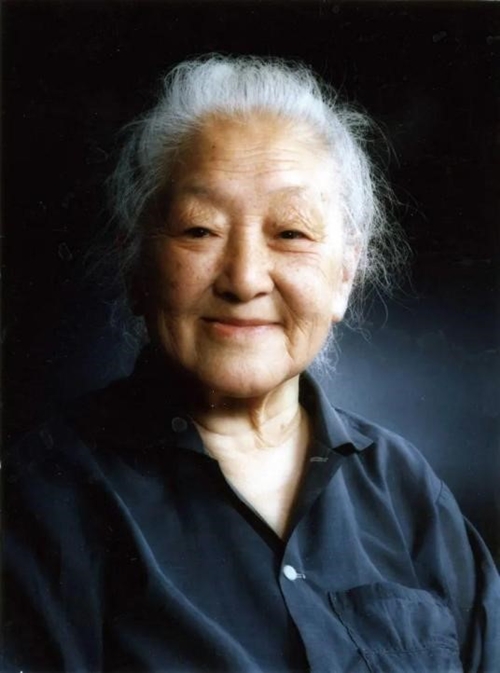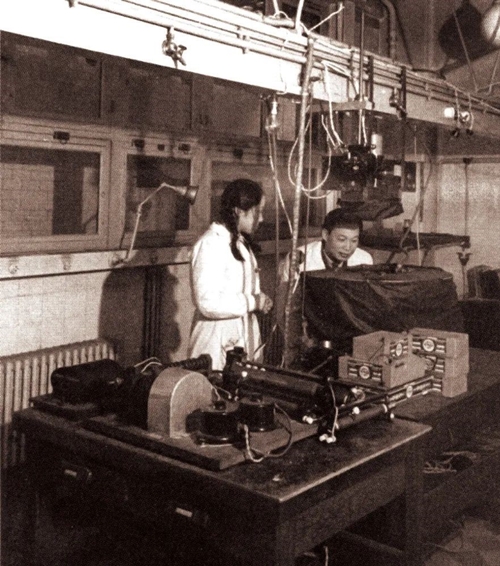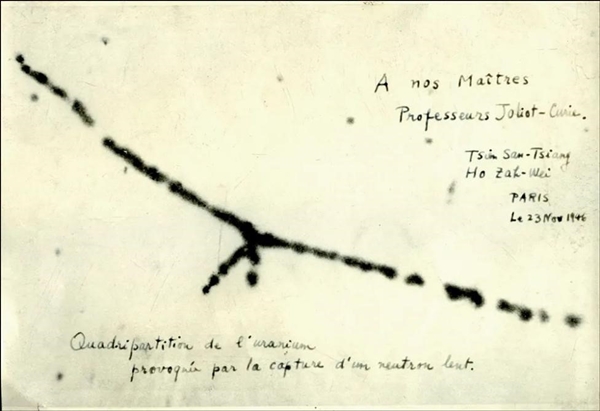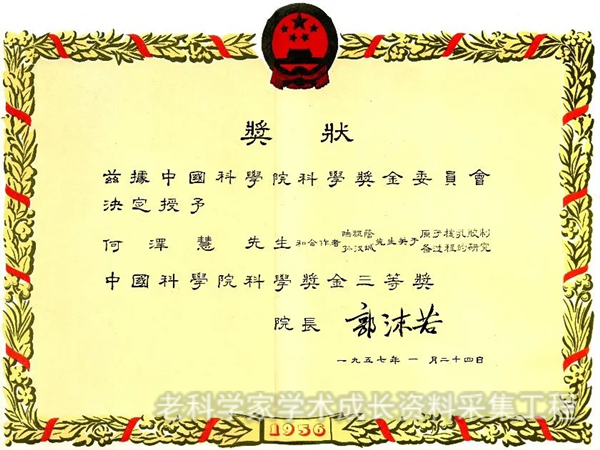He Zehui: Never fail the expectation of the motherland
She was one of the pioneers of China's atomic energy physics industry, one of the founders of the Institute of Modern Physics of the Chinese Academy of Sciences, and also one of the first female academicians in the field of physics. She was Academician He Zehui, known as "China's Madame Curie".

He Zehui scores the highest and Qian Sanqiang second in thesis
In 1931, He was admitted to the department of physics of Tsinghua University with excellent grades. At that time, it was not easy for female students to go to university, and it was even rarer to be admitted to a prestigious school to major in physics. But He's studies at Tsinghua University were not pleasant at the very beginning. That year, the department of physics had a total of 28 students, including 10 girls. Influenced by traditional beliefs, professors believed that it was difficult for girls to succeed in physics, so they tried to persuade them to change their major. This infuriated He, who grew up under the influence of the family culture of equality between men and women since childhood. She showed a stubborn side of her character: "The more you don't let me come, the more I want to come; You don't let me study physics, I insist on studying it!" In the end, the department had to compromise and agree to let the female students study physics for a semester, but if they did not perform well, they had to be transferred.
During the four years of study, there were constantly students withdrawing from the physics major. However, He not only did not change her major but also graduated with the highest score in the class in the thesis. In second place was her future "science partner" Qian Sanqiang. When looking for a job after graduation, He's female identity once again made her frustrated. The reason why He applied for the department of physics of Tsinghua University was out of interest, on the one hand. More importantly, she wanted to save the country through science. However, the professors actively recommended the male students but ignored He, who had better grades. So, He decided to study in Germany.
In 1936, she chose to major in "experimental ballistics" at the department of technical physics at the Technische Universität Berlin. The department had never accepted foreign students. He took the initiative to approach Professor Krantz, head of the department who had been a consultant in Nanjing. Prof. Krantz was finally moved by He’s patriotism and perseverance and made an exception to accept her. She became the first foreign student recruited by the department at that time and the first female student enrolled in the ballistics major.

In 1946, Qian Sanqiang and He Zehui conduct a "ternary fission" experiment in the cloud chamber at Madame Marie Curie's lab in Paris. [Photo/mmcs.org.cn]
After obtaining her doctorate, He decided to return to China. However, with the outbreak of war, He had to stay in Germany for scientific research. In the spring of 1946, after marrying her husband Qian, He joined Marie Curie’s Laboratory and worked together on nuclear physics. In the experiments, the two faced difficulties and spent all their time in the laboratory except for eating and sleeping. They used nuclear emulsion as a detector to conduct fission experiments. In a large number of observations, He's meticulousness and patience played a role. She not only found a special case of ternary fission but also discovered the first case of quaternary fission on November 22 of the same year.
In 1946, at a meeting of the French Academy of Sciences, Joliot Curie reported on the "Experimental Evidence of Uranium Quaternary Fission", published with He as the first author. This discovery was a significant achievement in physics after World War II and caused a sensation in the international scientific community. Back then, the French Academy of Sciences awarded them the the Henri de Parville Award, and Western newspapers referred to them as the "China's Mr. and Mrs. Curie". In 1947, Women of China Monthly also reported on the topic of "Chinese Female Scientists Discovering the New Uranium Fission". The "She Power" in China's physics community began to attract attention from the scientific community.

The film showing the quaternary fission of uranium, with the inscription by Qian and He written on November 23, 1946: "Dedicated to our mentor, Mr. and Mrs. Joliot-Curie." [Photo/mmcs.org.cn]
Independently developed nuclear emulsion
Qian and He had always believed: "Although science has no borders, scientists have a motherland. No matter how poor our motherland is, it is our own; and because she is poor and backward, we need to work hard to change that." In 1948, the two bade farewell to Mr. and Mrs. Joliot-Curie and embarked on a journey home.
In 1950, He presided over the research project of producing nuclear emulsion, when only two countries in the world, the United Kingdom and the former Soviet Union, had mastered the technology of manufacturing nuclear emulsion.
Faced with the situation that there was no relevant industrial base in China, He led her assistants to do it themselves. At the very beginning, making a pot of nuclear emulsion required three people to work at the same time. They put the beaker containing the aqueous gelatin solution in a water bath with a constant temperature of 45-50°C. He Zehui held a glass stirring stick with a special shape and stirred it constantly, Lu Zuyin took a glass dropper containing potassium bromide aqueous solution, and Sun Hancheng took a glass dropper containing aqueous silver nitrate solution. In the dark room with a dark red light, all three of them listened to the command of a metronome, and every time it sounded, He turned the stirring stick around, Lu and Sun each pressed the rubber ball of the dropper once, dropping a drop of potassium bromide and silver nitrate. In this way, these physicists took on the work of chemists, learning by doing.
Under such rudimentary conditions, He's team relied entirely on self-exploration to make a nuclear emulsion in 1953 with a sensitivity comparable to that of the Ilford Type C2 from the UK. Under the strict control of He, they successfully made nuclear emulsion nucleus-2 and nuclear-3 emulsion that are sensitive to protons, α particles, and fission fragments, which won the third prize of the first National Natural Science Award in China.

"Research on the preparation process of nuclear emulsion" won the first scientific prize awarded by the Chinese Academy of Sciences. [Photo/mmcs.org.cn]
In 1973, the Institute of High Energy Physics at CAS was established. He Zehui served as the deputy director and began to actively promote the research of cosmic rays ultra-high-energy physics, and high-energy astrophysics. Under her advocacy and support, the former Cosmic Ray Laboratory of the Institute of High Energy Physics built the world's highest (5,500 meters above sea level) alpine emulsion room in the Ganbala Mountains in Xizang through domestic and international cooperation, which has greatly promoted the research on high-energy astrophysics in China.
He dedicates her whole life to scientific research
He Zehui, whether in adversity or in her old age, never gave up the pursuit of science. During the turbulent period, when He was in the cadre school, she recorded what she saw and felt: "The 'Gaozhuang' we are in has no high-rise buildings, no trees, and the sky is full of stars at night... Isn't this just a big lab?" So, He and Qian made observation equipment by themselves to observe the comet.
Song Liming, a researcher at the Center for Particle Astrophysics, recalled: "The stargazing device consisted of a tripod made by themselves and a protractor used by junior high school teachers in class, and they also drew sketches. Prof. He also introduced to me how to determine the dimensions and time of observation, how to determine the direction of the comet, how to process the data, and finally how to compare the data with the astronomical almanac."
On June 20, 2011, He passed away peacefully at the age of 97.
In the final issue of 2011 of CERN Courier, a journal of the European Organization for Nuclear Research, a long commemorative article stated that many women physicists had aspirations, but none of them gained the worldwide reputation like Madame Curie, and thus were less well-known. He Zehui was one of them. She loved her homeland and science and became a symbol of both.
This is a summary of He's contributions and qualities by international peers.








